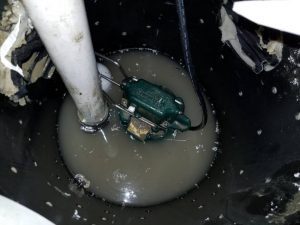Exterior Waterproofing
Making sure that your home’s exterior has been waterproofed is critical to the safety and cleanliness of the structure. The exterior walls of your home should be covered in some type of weather-proof material, and your home should have a functioning gutter system. However, there is much more that can be done to make sure that your home doesn’t develop issues related to standing water. If you have clogged gutters or poor drainage, puddles will form around the base of your home and that standing water will start to seep into your foundation. This can lead to cracks in the foundation and mold problems. Making sure that your home has been thoroughly waterproofed on the exterior is an important step to ensuring the safety and longevity of the structure, and it will save you money down the road.
The best way to help create a waterproof exterior is to have a system in place that is effective at moving water away from your home. Get in touch with Tidewater Home Improvement today to discuss which plan would be best for your home. There are a few options to consider, which we will discuss below.

French Drain
A french drain is less sophisticated than it sounds like! It is simply a ditch in the ground, with a perforated pipe laying in the ditch, and then covered with gravel or some sort of stone. The slope of the ditch funnels water away from unwanted areas (the base of your home) and leads it out to a place that you do want it to go (a rain barrel or a storm drain). The gravel or stone hides the pipe, to make it look a little more attractive than your average ditch, and it also acts as a way to filter out debris, so there are less particles to clog the pipe. The pipe (usually PVC) has small holes drilled in the top so that water can filter through and then slide down the pipe and away from your home. This is a simple, inexpensive solution for areas prone to standing water. However, it relies on slope to move the water. If your yard naturally slopes down, away from the foundation, it will work easily. However, if you are moving water uphill, or away from an area with a more complicated grade, you will need to go with an alternative option.
Sump Pump
 Sump pumps are placed at low points in the floor or ground – generally in the basement, and sometimes outside. They automatically start to pump water when they detect it starting to pool. If water starts to collect in your basement, it is important to have a sump pump there to prevent water damage from happening. If you have an area that is especially prone to standing water outside of your home, you could consider installing a sump pump there as well. Once water is detected it is pumped out and away from the area. The slope of that land around your house is also important for sump pumps. If you live on a slope, a sump pump can be much more effective because it doesn’t have to fight against gravity. If you live in a flat area, there are less options available.
Sump pumps are placed at low points in the floor or ground – generally in the basement, and sometimes outside. They automatically start to pump water when they detect it starting to pool. If water starts to collect in your basement, it is important to have a sump pump there to prevent water damage from happening. If you have an area that is especially prone to standing water outside of your home, you could consider installing a sump pump there as well. Once water is detected it is pumped out and away from the area. The slope of that land around your house is also important for sump pumps. If you live on a slope, a sump pump can be much more effective because it doesn’t have to fight against gravity. If you live in a flat area, there are less options available.
Membrane
An exterior foundation membrane is a waterproofing solution that is applied to the outside of your home. After digging down on the outside to the base of your foundation, a membrane coating is applied to the foundation. This prevents water from seeping in through the concrete and into your basement. A french drain is often used along with the membrane. After digging down to apply the membrane, piping to lead the water away from your home is installed as well.
Discharge Line
This also requires the slope of your home to be suitable for moving water downhill. If you live in a flat space, you will need to create a downhill slope to allow the water to flow away from your home. A discharge line is sort of an extension of your gutter and downspout. Begin by attaching piping (fully enclosed pipe – not perforated) to the bottom of your downspout, dig a trench that is big enough to bury your pipe in, and have the pipe flow away from your home. Have the pipe lead the water coming out of your downspout away from your foundation and bury it. The pipe will be capped with a grate and the grate will stick out of the ground to allow the water to come out.Depending on the path you want the water to flow, you can use a straight pipe, or a corrugated, bendable pipe. Try to prevent too many twists and turns, because this can lead to clogs.
Exterior waterproofing can be achieved in many different ways, all depending on your budget, the layout of your home, the slope of your land, and where standing water is pooling. Maintaining the integrity of your foundation is really important, because small issues can quickly become big problems when left untreated. Tidewater Home Improvement is here to create a plan to waterproof your home’s exterior. Call to schedule an appointment today!
Don’t let a minor problem become a major problem
